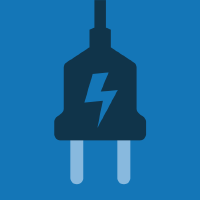Topic Menu
► Topic MenuTopic Editors


Design, Applications, and Control Algorithms of Emerging Topologies
Topic Information
Dear Colleagues,
There are several challenges at the moment when it comes to selecting the optimal topology for a desired application. Therefore, it is mandatory to give more attention to designing an appropriate converter—working with novel and more professional techniques, starting with the optimization of the components, until the optimal control algorithm is found. Recently, multilevel converters and new advanced topologies have attracted more interest in applications such as photovoltaic and wind power systems, uninterruptible power supplies, MV drives, and active filters. In addition, advanced control techniques are required in order to face the new challenges related to the integration of power electronics into the grid. This Topic is intended to share the state of the art of emerging topologies and novel techniques to find optimal solutions for desired applications. Original contributions, including experimental validation, are expected. The topics of interest include but are not limited to:
- Emerging converter topologies;
- Multilevel converter topologies;
- Multilevel modulation strategies;
- Fault-tolerant analysis in emerging topologies;
- Advanced control algorithms.
Prof. Dr. Thierry A. Meynard
Dr. Jaime W. Zapata
Topic Editors
Keywords
- converter topologies
- multilevel converters
- optimization methods
- designing power converters
- control algorithms
Participating Journals
| Journal Name | Impact Factor | CiteScore | Launched Year | First Decision (median) | APC |
|---|---|---|---|---|---|

Applied Sciences
|
2.7 | 4.5 | 2011 | 16.9 Days | CHF 2400 |

Designs
|
- | 3.2 | 2017 | 16.4 Days | CHF 1600 |

Electricity
|
- | - | 2020 | 20.3 Days | CHF 1000 |

Electronics
|
2.9 | 4.7 | 2012 | 15.6 Days | CHF 2400 |

Energies
|
3.2 | 5.5 | 2008 | 16.1 Days | CHF 2600 |

MDPI Topics is cooperating with Preprints.org and has built a direct connection between MDPI journals and Preprints.org. Authors are encouraged to enjoy the benefits by posting a preprint at Preprints.org prior to publication:
- Immediately share your ideas ahead of publication and establish your research priority;
- Protect your idea from being stolen with this time-stamped preprint article;
- Enhance the exposure and impact of your research;
- Receive feedback from your peers in advance;
- Have it indexed in Web of Science (Preprint Citation Index), Google Scholar, Crossref, SHARE, PrePubMed, Scilit and Europe PMC.

